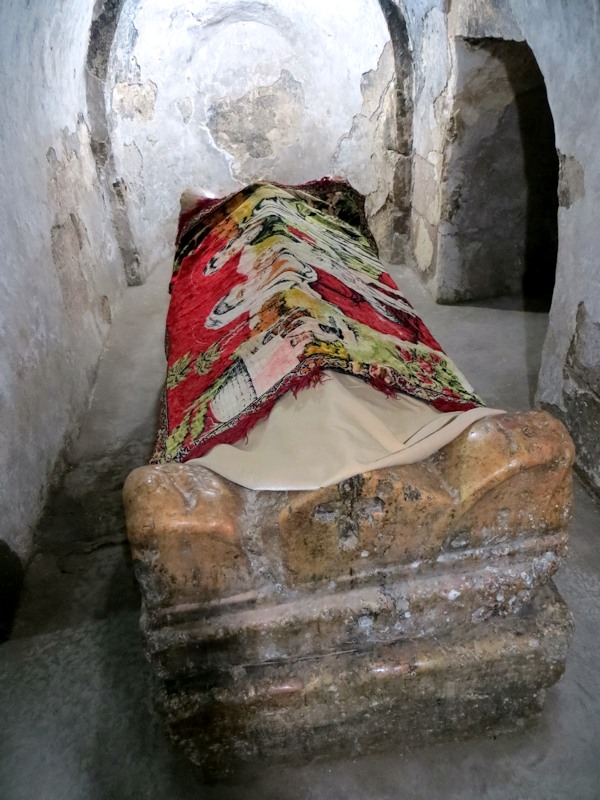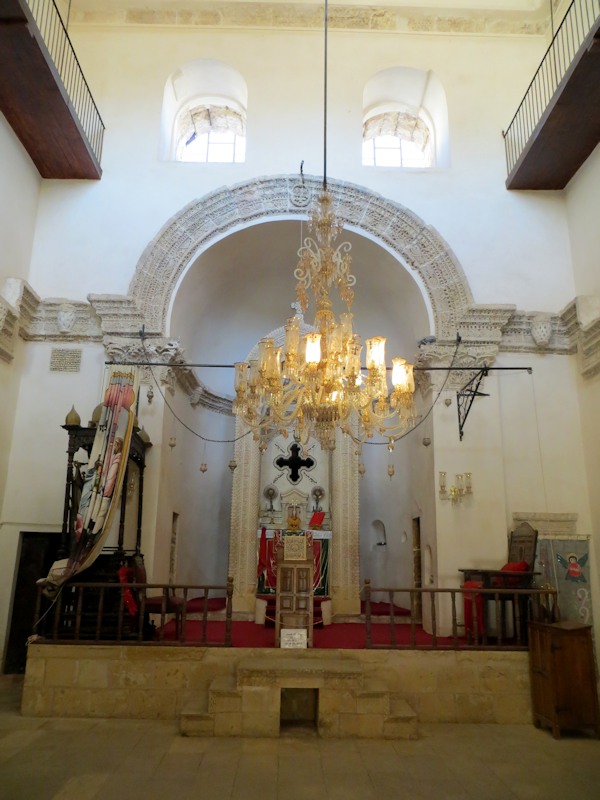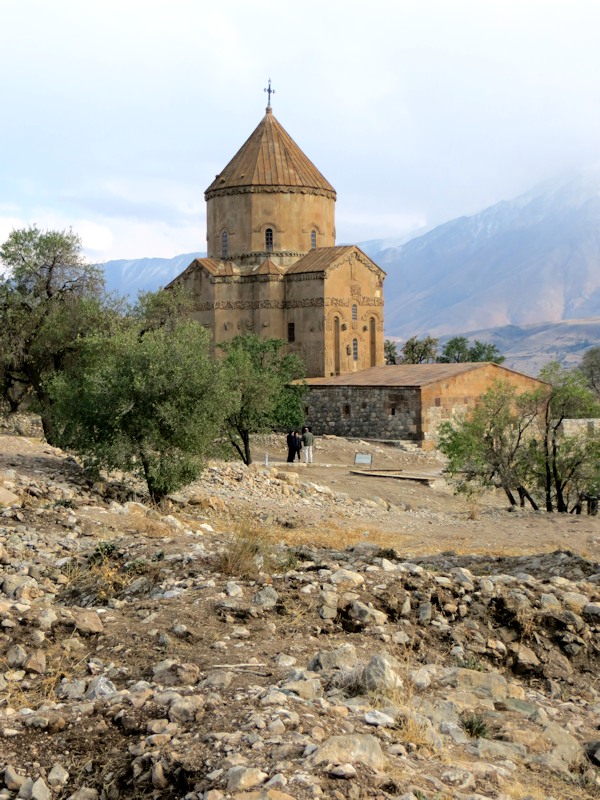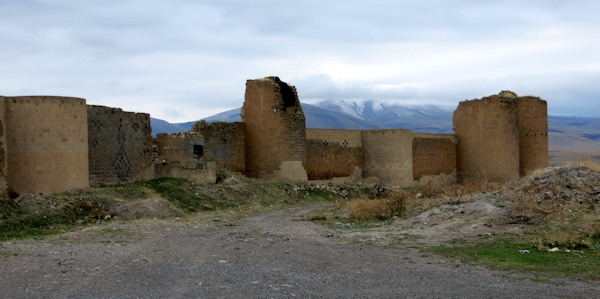Relaunch of Asylum Advocacy Group
On 15 October Baroness Berridge, convenor of the All Party Parliamentary Group for International Religious Freedom, hosted a reception at the House of Lords to relaunch the AAG (Asylum Advocacy Group). It was founded in 2007 under the chairmanship of His Grace Bishop Angaelos, to bring together a wide range of people working in the field of support for those seeking asylum on the grounds of religious persecution. Initially its remit was to support Egyptian Christians, but events in the Middle East and North Africa over the past few years, led to a desire to widen its remit to support those of other faiths and in other countries, where people suffer for their religious convictions. At the relaunch there were also representatives of Baha’i and Shia Muslim Groups and those who spoke expressed the desire to see a wide range of faiths represented as witnesses of their commitment to human rights and justice. Abba Seraphim, who is a founder member, attended along with representatives of some sixteen diverse bodies. He spoke of his active support over many years for those persecuted for converting to Christianity, as well as Christians suffering injustice under regimes in Egypt, Sudan and Eritrea.
Father Shenouda’s wise words about tragic death of Eritrean refugees

The tragedy which occurred off the island of Lampedusa, in which hundreds of Eritrea and Somalian refugees were killed in a shipwreck, took place on 3 October, while Abbas Seraphim was on pilgrimage in Turkey and without proper access to current news. This meant that he did not learn the full scale of the tragedy until after his return to the United Kingdom.
On 6 October a candlelit vigil was held at Speakers’ Corner at London’s Hyde Park, at which Elsa Chyrum, an Eritrea human rights’ activist spoke movingly of the plight of those driven out of their country by the current regime. Also present was Father Shenouda Haile, the London priest of the free Eritrean Orthodox Church under His Grace Bishop Makarios, whose simple but heartfelt speech also moved many people. One of those present later wrote on Facebook, “What impressed me is his analysis of the underlying reasons why Eritreans at home and in Diaspora found themselves in such helpless situations. It can be summarised as fear, greed, selfishness “a culture of I don’t care about others” and indifference to the injustice that is driving people to flee Eritrea …. He pleaded to change our behaviours to care for each other, to be tolerant and help those who are in dire needs such as those languishing in refugees’ camps in Sudan and Ethiopia. He pleaded with us to turn ourselves to God to help us to awaken our authentic self and stands up to injustices with unity and love for each other. He also prayed to God so that he whispers to the ears of the [current Eritrean ruling] authorities to come to their senses and stop oppressing the Eritrean people. His advice was worth listening to, it was words of wisdom.” Another commentator spoke of his “courage, clarity and words of wisdom” and expressed the hope that “his words will reverberate in the ears of the other religious leaders and their followers who have chosen to ignore the plight of our youth – their very flock.”
A video of his message (in Tigrinyan) can be viewed at:
http://assenna.com/message-by-aba-shenoda-during-london-candlelight-vigil-in-memory-of-the-eritrean-victims-perished-off-lampedusa-coast-p2/
Visit to Syriac Monasteries: 8-12 October
In company with his fellow pilgrims, Abba Seraphim, travelled from the cold mountainous regions of north-eastern Turkey to the warm southern lowlands leading to the plan of Mesopotamia. Stopping briefly at the Kurdish city of Hasankeyf, on the Tigris, they spoke with local people who face eviction from their ancient and historic city when the hydro-electric Ilisu Dam is constructed. This controversial project has met much opposition, both locally and internationally, but the Turkish government has pushed ahead relentlessly and is already building a new city, to rehouse the population, on the opposite shore.

From here they travelled to Midyat, arriving at Mor Gabriel Monastery in time for tea. The entire party was warmly greeted by Mor Timotheos Samuel, the Archbishop of Tur Abdin since 1985. This was a return visit for several of the pilgrims but especially for Father Stephen Griffiths, who has been visiting regularly over the past sixteen years and now regards himself more as a member of the local community than a visitor. As members of the Tur Abdin Focus Group, Bishop Christopher of Southwark, Abba Seraphim and Father Stephen were able to discuss with Mor Timotheos the resolution of most of the claims on the monastery’s lands and the general state of the churches and monasteries around Tur Abdin. Over the next two days the pilgrims visited the early fifth century Monastery of Mor Yakub at Saleh; the 6th century Yoldath Aloho (Mother of God) Church at Hah, the recently excavated sixth century Mor Sobo Basilica and the little churches of Mor Shmuel and the former monastery of SS. Sergius & Bacchus (789). They were welcomed to Hah by its mukhtar, Habib Doghan. On returning to Midyat they visited the restored Mor Abraham Monastery, where land behind it has been given by the church to serve as a camp for Syrian refugees. Whilst staying at Mor Gabriel, Abba Seraphim and the pilgrims attended the morning and evening offices in the main church as well as the celebration of the Divine Liturgy on 9 October.

Leaving the monastery on the morning of 10 October they drove to the ancient monastery of Mor Augin, high up in the steep cliffs of Mount Islo, with its wonderful views across the Plain of Nusaybin. This had previously been deserted, but was re-opened in 2011 and now has three monks living there. It was wonderful to see this revival of the monastic life after an interruption of almost forty years. Descending to the plain the pilgrims drove to the bustling town of Nusaybin (the ancient Nisibis), some 10 km from the Syrian border. Recent archaeological excavations in the city centre have revealed a number of ancient buildings, including the Mar Yakub Church, the centre of the famous Syrian Theological School, founded by St. James of Nisibis in 350, whose sarcophagus still stands today in the crypt.

The party arrived at Deyrelzafaran (the Saffron) monastery, outside Mardin, on 10 October. Bishop Philoxenus had left that morning for a meeting abroad, but they were well received by Chorepiscopus Gabriyel Akyűz, the distinguished Syriac historian, author and poet. The historic monastery had been the seat of the Syriac Orthodox Patriarchs of Antioch from 1293-1932 and it is no secret that the Turkish government would like the Patriarch to leave Damascus and relocate back in Turkey. Although there are one monk and a nun, living with Bishop Philoxenus at the monastery, it is a well known tourist attraction and there are always many visitors from both Turkey and abroad. Whilst morning and evening prayers are maintained, it is not a fully functioning monastery as at Mor Gabriel and Mor Augin.
The following morning, Bishop Christopher celebrated an Anglican Eucharist in the main chapel at the monastery, which Abba Seraphim and Archimandrite Deiniol both attended. After that Father Gabiyel warmly received the pilgrims in the Forty Martyrs Church in Mardin (originally dedicated to Mor Behnam and Saro) in 569 and entertained them to tea in the former Patriarchal Residence in Mardin. From there they toured the Bazaar, the Museum (formerly the Syrian Catholic Patriarchate) and the Chaldean Catholic Church of Mor Hűrműzd.
They returned to London on 12 October.
Abba Seraphim on island of Aghtamar

On 7 October Abba Seraphim and his fellow pilgrims visited Lake Van in south-eastern Turkey from where they took a boat to the island of Aghtamar, once the capital of the Armenian kingdom of Vaspurakan under the Artsruni dynasty, as well as the seat of an independent Armenian Catholicosate, which existed for over a thousand years until 1915. This part of the lake is also the ancestral home to Abba Seraphim’s three Van cats. The beautiful palatine built by King Gagik Artruni has recently been restored, as well as the Armenian Patriarchate of Constantinople being permitted to celebrate the Divine Liturgy each tear on the Feast of the Holy Cross.

Pilgrims visit ancient ruined Armenian capital

On 6 October Abba Seraphim, in company with his fellow pilgrims, visited the ancient Armenian royal capital of Ani on the Armenian-Turkish border. The magnificent ruins, stretching over more than a square mile on the edge of a deep ravine of great natural beauty, witness to this beautiful city and include the great cathedral of Ani with several churches in various stages of decay. They are a poignant reminder of the great Christian civilisation that once flourished in this area. Sadly, although a world-class monument it is neglected by the Turkish and restoration has not always been sensitive.

